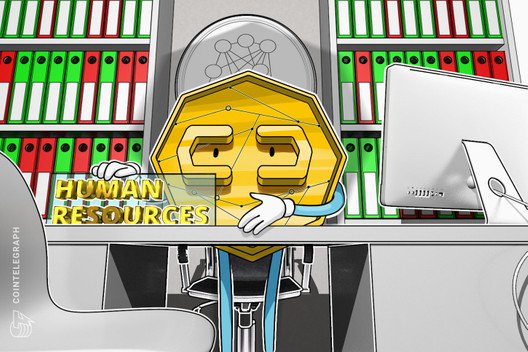This article does not contain investment advice or recommendations. Every investment and trading move involves risk, you should conduct your own research when making a decision.
Historically, over the past nine years, Bitcoin (BTC) has experienced four major corrections, all of which led Bitcoin to decline by more than 80 percent in value. The correction the crypto market experienced in 2018 resulted in a 69 percent drop in the price of Bitcoin, with some other cryptocurrencies like Binance Coin (BNB) and EOS recording smaller losses.
In August 2010, August 2011, January 2014, and January 2018, Bitcoin demonstrated 70 to 80 percent losses against the US dollar.

As Cointelegraph previously reported, according to researchers at Chainalysis, the Bitcoin market has matured throughout the past nine months. Despite a steep decline in the price of Bitcoin, the majority of investors held on to their investments, minimizing alterations in their positions even during a period of uncertainty and extreme volatility.
“The market seems to have recalibrated after the entry of so many new market participants with different beliefs and expectations than those who held Bitcoin prior to 2017. Neither long-term investors nor new speculators have changed their positions much this summer. This suggests that the market will make a major move, for better or worse, only in response to a fundamental change.”
The maturity of the Bitcoin market has been evident in the stability of BTC since Aug. 6. Over the past two months, Bitcoin has remained stable in the $6,300 to $6,800 range, rarely breaking out of the $6,800 resistance level, while other cryptocurrencies like Ripple and Ethereum demonstrated high volatility.

Image source: coin360.io
Within the two-month period, Bitcoin dropped nine percent of its market valuation while Ethereum and Ripple recorded 50 percent corrections, which ultimately led both XRP, the native cryptocurrency of Ripple, and ETH, the base currency of Ethereum, to surge in the second half of September.
The increase in the stability of Bitcoin has allowed the market to become less sensitive to hype and specific events. Major positive developments in the cryptocurrency sector — such as the formation of Bakkt by Microsoft, Starbucks and ICE to improve the accessibility and liquidity of Bitcoin — barely had any impact on the short-term price trend of Bitcoin.
Experts including ShapeShift CEO Erik Voorhees, billionaire investor Mike Novogratz, legendary venture capitalist Ben Horowitz and Coinbase Chief Technology Officer Balaji Srinivasan believe that the crypto market will recover in the months to come.
Trend of major cryptocurrencies in 2018
On CNBC’s “Crypto Trader,” popular cryptocurrency trading platform ShapeShift CEO Erik Voorhees stated that the bear market of Bitcoin and other major cryptocurrencies is gradually coming to an end.
Voorhees explained that, while the bear market is not completely over — given the 80 percent drop in the valuation of the crypto market — the market seems to have recovered from the worst part of the correction.
“I don’t expect it [the bear market] to end soon, although I do think that the rate of collapse has slowed considerably. Generally in these bubbles, after you go through several months of a downtrend, you hang out in a range for a while […] But I think we are done with a majority of the collapse.”
ShapeShift CEO Erik Voorhees
The analysis of the cryptocurrency market by Voorhees accurately described the current state of the market. Since June, the crypto market has been engaged in a bottoming-out process, maintaining tight support levels at the low level of $190 billion and attempting to break out of the $220 to $230 billion range.
For instance, on Sept. 25, the price of Bitcoin Cash (BCH) hovered around $420. As of Sept. 26, the price of BCH remains above $540, up more than 20 percent on the day. As such, Voorhees noted that it is a viable time to start accumulating crypto, because the market has been volatile in its low price range.

Several cryptocurrencies, including Cardano (ADA), XRP and Stellar (XLM), have demonstrated similar volatility on the upside, recording 10 to 30 percent gains within short periods of time. In the months to come, it is likely that the crypto market will continue to recover gradually but experience large temporary spikes.
Obvious trend of Bitcoin: Volatility between $6,000 and $8,000
The trend of Bitcoin, the most dominant cryptocurrency in the market, has been fairly predictable. Since February of this year, Bitcoin has experienced a pattern of achieving a new monthly high and dropping to a yearly low the subsequent month. The gap between the monthly high and the yearly low declined as time passed, as portrayed by the graph of Bitcoin below.

Image source: CoinMarketCap
In early February, Bitcoin dropped to $6,000 but rebounded to $10,000 the next month. In April, Bitcoin dropped to a yearly low once again at $6,000, only to rebound to $9,400 the next month. But, the gap between the yearly low and the monthly high declined. In the next month, June, the price of Bitcoin predictably dropped to $6,000, achieving $8,400 the following month.
In August, Bitcoin dropped to $6,000 once again, attempted a recovery to $8,000 but failed and remained in the mid-$7,000 region. Since hitting $7,000, Bitcoin has dropped to the lower region of $6,000.
It is obvious that the Bitcoin market has been bottoming out in the mid-$6,000 region, after major attempts to break out of resistance levels at $10,000, $8,000, and $6,000. Each time a resistance level was tested, the strength of a short-term rally decreased, disallowing the dominant cryptocurrency to test higher resistance levels.
Billionaire investor Mike Novogratz stated that the market has started to demonstrate signs of seller fatigue, as bears have started to become uncomfortable selling cryptocurrencies at such a low price range. Novogratz emphasized that the cryptocurrency market has bottomed out based on various technical indicators.
“I think we put in a low yesterday. Retouched the highs of late last year and the point of acceleration that led to the massive rally/bubble. Markets like to retrace to the breakout. We retraced the whole of the bubble.”
Mike Novogratz
Entrance of institutional investors
Throughout 2017, especially as the crypto market achieved an all-time high at $800 billion, talks around the potential entrance of institutional investors intensified. However, in hindsight, the large rally of the crypto market late last year was quite clearly triggered by a new wave of interest demonstrated by retail traders and individual investors globally.
In regions like South Korea and Japan, the interest and demand toward cryptocurrencies increased to a point at which exchanges no longer had supplies of cryptocurrencies to sell to buyers, leading to the emergence of premiums.
When the price of Bitcoin achieved an all-time high of $20,000, the price of Bitcoin surpassed $24,000 in South Korea’s cryptocurrency exchange market.
Even if institutions were interested in investing in the cryptocurrency market, Kyle Samani, a general partner at Multicoin Capital, stated that trusted custodian solutions were not in place and the lack of infrastructure prevented institutions from committing to the asset class. He said:
“There are many investors where custody is the last barrier. Over the next year, the market will realize that safekeeping is a solved problem. This will release a large capital wave.”
Ari Paul, the co-founder of large-scale cryptocurrency hedge fund Block Tower, echoed the sentiment of Samani and stated:
“Custody isn’t binary. It’s not like Coinbase Custody will launch and suddenly every pension will throw $100 million into BTC. It takes time for custody solutions to gain trustworthiness. But, I think we’ll have solid third-party custody by September of this year. That will allow institutional inflows to start accelerating. Once a couple big traditional money managers announce that they’re including BTC as ‘digital gold’ in their portfolios, others will follow.”
With BitGo and Coinbase already approved as trusted Bitcoin custodians in the United States market and major banks Citigroup, Goldman Sachs and Morgan Stanley preparing to serve customers in the crypto market, Novogratz explained that in the upcoming months, institutions will enter the market.
Once Bitcoin surpasses major resistance levels at $8,800 and $10,000, Novogratz stated that in three to six months, institutions will begin allocating their capital into the market.
“It’s also a bull market in institutions building the infrastructure needed for real money investors to start investing in this space […] I think that in three to six months from now, there will be an ‘all clear’ sign for people — big institutions and pension [funds] — to start investing.”
If institutions do enter the crypto market, Novogratz emphasized that the price of Bitcoin will likely achieve a 30 percent increase by the end of 2018.
Bubble-Burst-Build-Rally Trend
According to Coinbase Chief Technology Officer Balaji Srinivasan, he first gained significant confidence in Bitcoin and the crypto market after it survived the 2011 crash. The resilience of the crypto market and its ability to bounce back from large corrections demonstrated the market’s potential to investors.
The 2018 correction had a similar impact on the market. Although many investors were negatively impacted by the 69 percent drop in the price of Bitcoin, in the past eight months, the market has seen some of the most positive news in all of its history.
Starting with Goldman Sachs, Citigroup and Morgan Stanley developing trusted crypto custodian solutions, Bakkt, Nasdaq and many other regulated financial institutions in Japan and South Korea have started to find ways to support the crypto market.
Most recently, Brazil’s largest independent brokerage announced its plans to integrate a Bitcoin and Ethereum exchange in the next few months, after receiving support from the government which opened an investigation into the country’s major banks amid allegations that banks have not been providing crypto exchanges with sufficient banking services.
“The reason this thing [cryptocurrency] really had legs was after 2011, when there was a bubble and it went up, and it came down, and it didn’t go to zero. It kind of stabilized and kept coming back up. Around that time was basically when I said ‘Okay, this is going to stick around, it’s got legs, it’s not going to zero.’ That was kind of a build year. We have this kind of bubble-crash-build phases in crypto, and that is really when I start to get involved.”
The bubble-crash phase of Bitcoin and the crypto market was January to July, and as the market has done since 2011, the cryptocurrency market is expected to recover. In comparison to last year, in terms of regulation, infrastructure and developer activity, the cryptocurrency and blockchain sector has improved by unprecedented levels.
Rising developer activity
Ben Horowitz, the co-founder of Andreessen Horowitz (A16Z), a venture capital firm considered to be one of the most successful technology-focused investment companies, stated that the developer activity in the blockchain sector resonates similar to that of the internet in the 1990s.
Horowitz explained that he has not seen such a high level of developer activity in a single industry since the internet, and considering that cryptocurrencies and blockchain networks are essentially computing networks, the exponential increase in the developer activity of blockchain projects is a positive indicator of growth.
“I think that there is probably more developer activity in crypto than in anything we’ve seen since the internet and the right way to think about it is [that] it’s a new computing platform. Once every decade or two, a new computing platform comes along. The thing that is deceptive about [it] is that when the new platform at the time is generally worse in most ways than the old platform but has some new capabilities.”
Ben Horowitz, the co-founder of Andreessen Horowitz
In a study released in 2017, JP Vergne, a professor at Ivey Business School, revealed that developer activity is the most accurate indicator of cryptocurrency exchange rate trends.
Based on the trend of the market since 2011 and its ability to recover to new all-time highs after a major correction, it is highly likely — given the high developer activity around large blockchain networks — that the cryptocurrency market will recovery by the end of this year as many experts predict.









